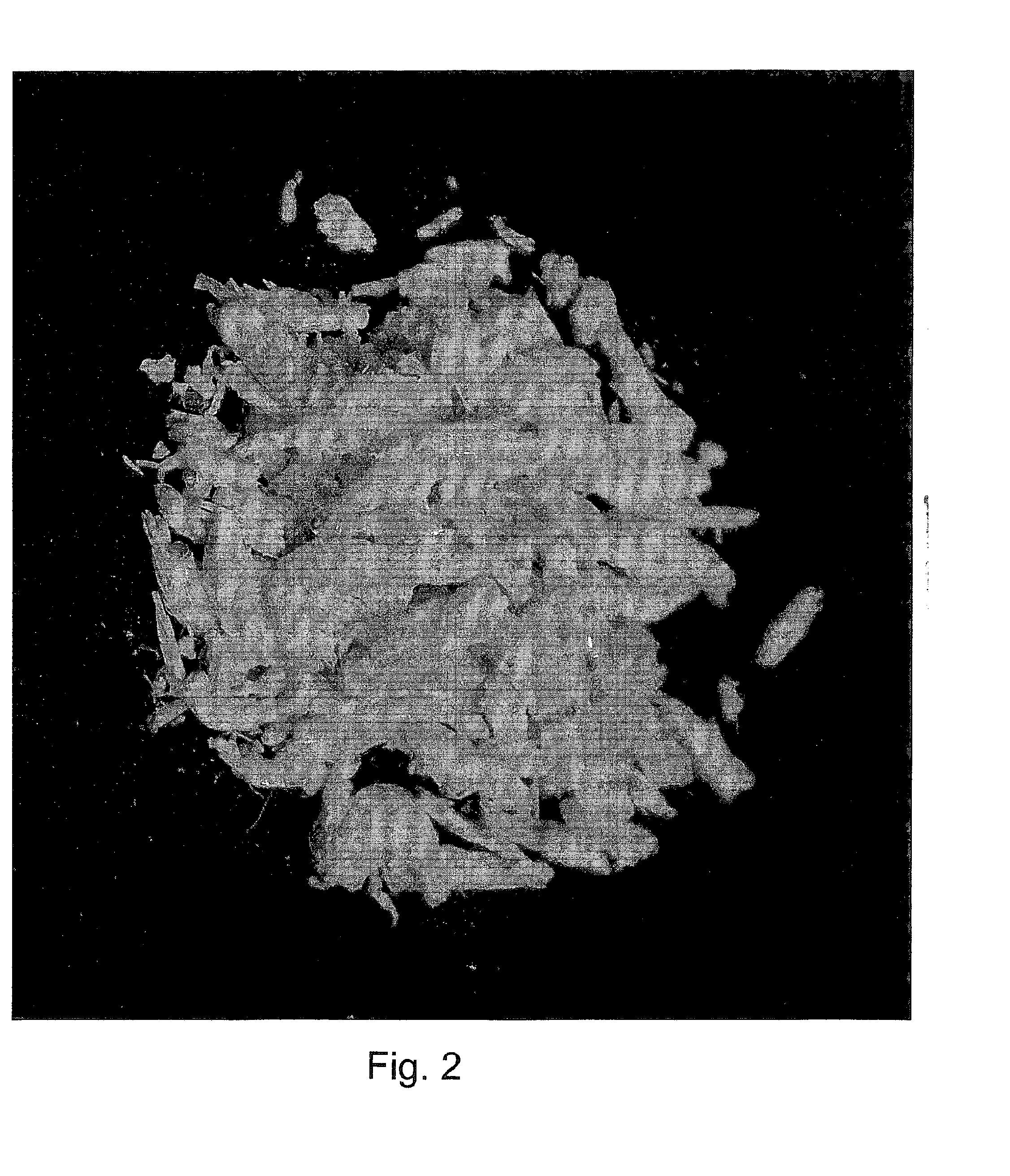Process for production of omega-3 rich marine phospholipids from krill
- Summary
- Abstract
- Description
- Claims
- Application Information
AI Technical Summary
Benefits of technology
Problems solved by technology
Method used
Image
Examples
example 1
Processing of Freeze Dried Krill
[0034]Freeze dried krill was extracted with CO2 at supercritical pressure. This gave a product of 90 g / kg. Analysis showed that the extract contained a sum of EPA plus DHA of only 5.4%, showing that this did not contain a significant amount of the omega-3 rich phospholipids. A second extraction with CO2 containing 10% ethanol resulted in an extract of 100 g / kg (calculated from starting sample weight). 31P NMR showed that the product contained phospholipids. The extract contained a sum of EPA plus DHA of 33.5%.
[0035]In both steps the extraction conditions were 300 bar, 50° C.
[0036]Thus, it is possible substantially to separate the omega-3 rich phospholipids from the less omega-3 rich components of the krill lipids.
[0037]In a second experiment the freeze dried krill was extracted twice with the same pressure and temperature as above, first with 167 parts (weight) of pure CO2, and then with 167 part (weight) of CO2 containing 10% ethanol. The combined ex...
example 2
[0039]Fresh E. superba (200 g) was washed with ethanol (1:1, 200 g) at around 0° C. The ethanol extract (1.5%) contained inorganic salts (mainly NaCl) and some organic material.
[0040]The ethanol washed krill was extracted with CO2 containing 10% ethanol. This gave an extract of 12 g (6% based on starting krill). Analysis (TLC and NMR) showed that the extract contained phospholipids, triglycerides and astaxanthin.
[0041]The person skilled in the art will realise that carbon dioxide at supercritical pressure can act as a solvent for ethanol. Thus, an alternative procedure for modifying the solvent power of the CO2 is to utilise pressure / temperature conditions so that ethanol is dissolve directly from the ethanol containing krill raw material, without having to be added by a pre-treatment of the CO2. This also applies for the examples below.
example 3
[0042]Fresh E. superba (200 g) was washed with ethanol (1:3, 600 g) at around 0° C. The ethanol extract (7.2%) contained phospholipids, triglycerides and astaxanthin, and some inorganic salts. The extract contained 26.3% (EPA+DHA), showing that the relative content of phospholipids was high.
[0043]The ethanol washed krill was extracted with CO2 containing 10% ethanol. This gave an extract of 2.2% based on starting krill. Analysis (TLC and NMR) showed that the extract contained phospholipids, triglycerides and astaxanthin. However, as the extract contained only 8.1% (EPA+DHA) it was concluded that the phospholipids content was low.
PUM
| Property | Measurement | Unit |
|---|---|---|
| Temperature | aaaaa | aaaaa |
| Temperature | aaaaa | aaaaa |
| Temperature | aaaaa | aaaaa |
Abstract
Description
Claims
Application Information
 Login to View More
Login to View More - R&D
- Intellectual Property
- Life Sciences
- Materials
- Tech Scout
- Unparalleled Data Quality
- Higher Quality Content
- 60% Fewer Hallucinations
Browse by: Latest US Patents, China's latest patents, Technical Efficacy Thesaurus, Application Domain, Technology Topic, Popular Technical Reports.
© 2025 PatSnap. All rights reserved.Legal|Privacy policy|Modern Slavery Act Transparency Statement|Sitemap|About US| Contact US: help@patsnap.com


